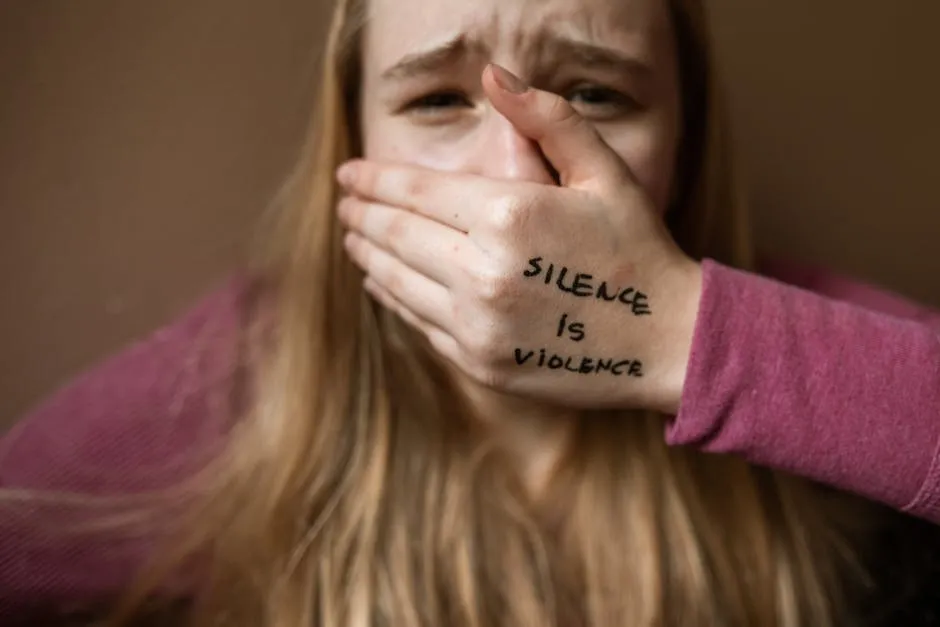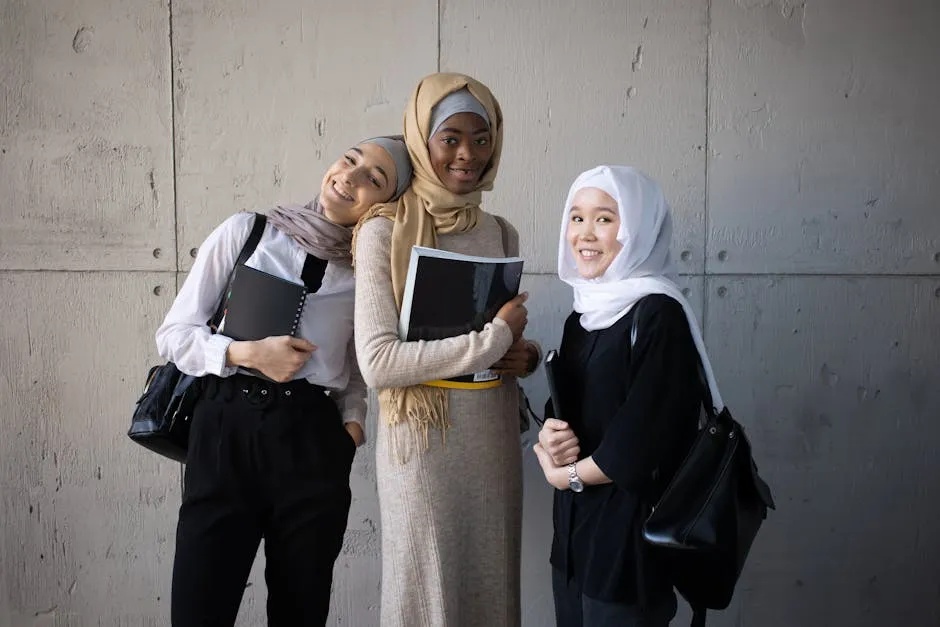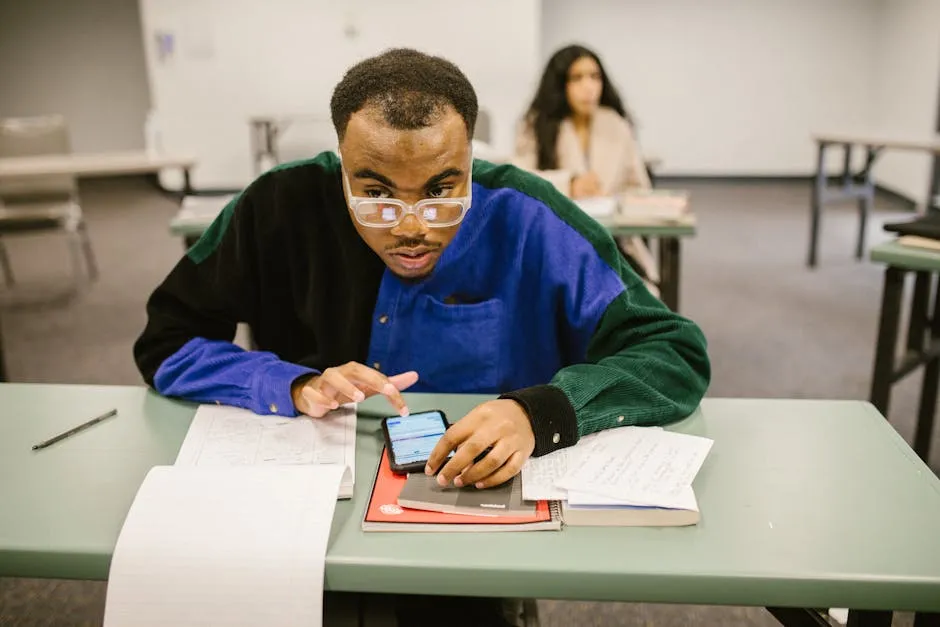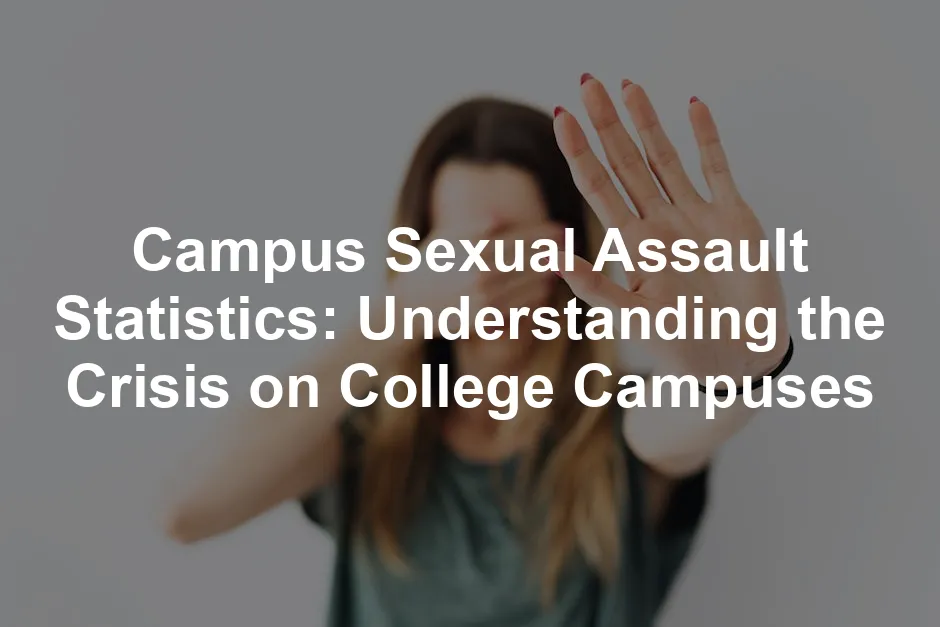Introduction
Campus sexual assault is a pressing issue that plagues numerous colleges and universities across the United States. It’s not just a statistic; it’s a reality that affects students’ lives daily. The relevance of this topic cannot be overstated. With approximately one in five women and one in sixteen men experiencing sexual assault during their college years, it’s clear that these incidents are alarmingly common.
Understanding the statistics surrounding campus sexual assault is crucial. First, they help illuminate the scope of the crisis, shining a light on the urgency to address it. Second, they provide essential insights that can help support survivors while guiding educational institutions in crafting effective prevention strategies. Awareness can lead to action, and action can lead to change.
In this article, we will cover the prevalence of campus sexual assault, identify demographics at greater risk, and explain the “Red Zone” phenomenon, a critical time frame when assaults are most likely to occur. By arming ourselves with knowledge, we can work toward creating safer environments for all students. Let’s unpack the numbers and the stories behind them.

For a deeper understanding of statistical learning, check out an introduction to statistical learning with python book length.
The Scope of Campus Sexual Assault
Understanding the Prevalence
Campus sexual assault is not an isolated issue; it affects a wide range of demographics. Women aged 18-24 are particularly vulnerable. Research reveals that 26.4% of undergraduate women experience rape or sexual assault through physical force, violence, or incapacitation. That’s more than one in four!
What about men, you ask? While it’s often perceived that men are less susceptible, the statistics tell a different story. About 6.8% of undergraduate men report experiencing the same grim reality. However, this figure likely underrepresents the true extent, as societal pressures often lead to underreporting among male victims.
Transgender, genderqueer, and nonconforming (TGQN) students face heightened risks as well. A staggering 23.1% of TGQN college students report experiencing sexual assault. These statistics highlight the urgent need for tailored support and resources for marginalized communities.

To help empower individuals in dangerous situations, consider investing in a Personal Safety Alarm Keychain. This discreet device can emit a loud alarm to attract attention, providing a valuable safety net for students navigating campus life.
The Red Zone
Now, let’s talk about the “Red Zone.” This term refers to the period from mid-August to November, when the risk of sexual assault surges. This timeframe is particularly dangerous for first-year students, who may be navigating new social environments and experiences. Research indicates that more than 50% of campus sexual assaults occur during these months. The excitement of a new academic year can turn into a nightmare if preventive measures are not in place.
In summary, understanding campus sexual assault statistics is vital. It sheds light on who is most affected and when these incidents are most likely to occur. Awareness of these trends can lead to enhanced prevention strategies, ultimately fostering a safer campus environment. Let’s continue advocating for change, supporting survivors, and working together to combat this crisis.

Factors Contributing to Campus Sexual Assault
Understanding the factors contributing to campus sexual assault is crucial. These factors often intertwine, creating a complex environment that increases vulnerability among students. Let’s break it down into three main areas: alcohol and drug use, campus culture, and the unique challenges faced by marginalized groups.
Alcohol and Drug Use
Alcohol and drugs play a significant role in campus sexual assaults. Many incidents occur when individuals are under the influence, impairing their judgment and ability to give consent. A striking 74.6% of those who report assaults indicate that they were drinking at the time. Notably, 27% of women and 10.8% of men noted that their assailants were also intoxicated.
Substance use can create an environment where boundaries blur, and consent becomes murky. Additionally, some victims report being drugged without their knowledge, a distressing reality that complicates their ability to report the assault. The National Institute on Alcohol Abuse and Alcoholism highlights that college students are particularly vulnerable, as they often engage in risky drinking behaviors, which can lead to dangerous situations.
This connection between substance use and sexual assault emphasizes the need for effective prevention strategies. Colleges must implement awareness programs that address the dangers of excessive drinking and the importance of clear communication regarding consent.

Campus Culture
Campus culture plays a pivotal role in shaping attitudes toward sexual violence. The prevalence of fraternity culture often exacerbates the risks associated with sexual assault. Research has shown that men involved in fraternities are three times more likely to commit rape than non-fraternity members. This hypermasculine environment tends to normalize aggressive behaviors, making it easier for sexual violence to occur.
Societal norms also contribute to the issue. Many young adults are exposed to harmful messages that trivialize sexual assault or promote victim-blaming. This creates an environment where survivors may feel ashamed or hesitant to come forward. A staggering 90% of campus sexual assaults go unreported, largely due to fear of judgment or disbelief from peers and authorities.
To combat these cultural issues, educational institutions need to foster an atmosphere of respect and accountability. Implementing comprehensive consent education programs can help reshape attitudes and encourage students to speak out against inappropriate behavior.

Intersectionality and Vulnerable Populations
The intersection of race, gender identity, and socioeconomic status significantly influences the risk of sexual assault on campuses. Marginalized individuals often face heightened vulnerabilities that compound their risks.
Marginalized Groups
For LGBTQ+ individuals, the statistics are particularly alarming. They are at a much greater risk of sexual violence, with 23.1% of transgender, genderqueer, and nonconforming students reporting experiences of sexual assault. This demographic often grapples with additional challenges, such as societal stigma and discrimination, making it harder for them to seek help.
Students with disabilities also face increased risks, with studies indicating that 31.6% of undergraduate women with disabilities have experienced nonconsensual sexual contact. These individuals often encounter barriers to reporting, including insufficient support services and a lack of accessible information.
First-generation and low-income students experience unique challenges as well. They may lack the resources or support systems to navigate the complexities of reporting incidents. This demographic often requires more assistance in understanding their rights and accessing available resources.
Overall, addressing the issue of campus sexual assault means considering the diverse experiences of all students. It is essential for universities to implement targeted prevention strategies that recognize and address the specific needs of vulnerable populations. By fostering an inclusive and supportive environment, institutions can better protect all students from the threat of sexual violence.

Underreporting and Reporting Rates
Why Victims Don’t Report
When it comes to campus sexual assault, underreporting is a significant issue. Many survivors choose to remain silent. Why? Let’s dive into some common barriers.
First, there’s stigma. Victims often fear being judged or blamed. Society can be harsh, and many worry about what others will think. This fear can be paralyzing.
Next up is fear—fear of retaliation from the perpetrator, or fear of not being believed. Many survivors think, “What if they don’t take me seriously?” This uncertainty can prevent victims from coming forward.
Confusion also plays a role. Many victims grapple with whether what happened constitutes assault. They may feel unsure if they can classify their experience as a crime. This uncertainty can lead to silence.
Statistics shed light on this troubling trend. Only 20% of female student victims aged 18-24 report their assaults to law enforcement. For many, the chance of being dismissed or ridiculed outweighs the desire for justice.
These barriers emphasize the need for supportive environments. Educational institutions must work to create safe spaces for victims to seek help without fear or shame.

For those looking to stay safe on campus, a Self Defense Keychain Tool can provide an extra layer of protection. Small and discreet, it can be a lifesaver in a pinch.
Institutional Response
How do colleges and universities respond to reports of sexual assault? The answer isn’t as straightforward as one might hope. Many institutions have policies in place, but their effectiveness can vary greatly.
Title IX is a federal law that prohibits gender-based discrimination in education. It mandates that schools provide resources and support for survivors. However, compliance is often inconsistent. The implementation of Title IX is crucial for ensuring that victims receive the support they need. Schools must have clear reporting procedures and resources available.
Despite these regulations, many survivors still feel let down by their institutions. Some report that schools focus more on protecting their reputations than on supporting victims. This perception can discourage reporting and perpetuate the cycle of silence.
Additionally, campus law enforcement plays a vital role. Statistics show that 86% of sworn campus police have the authority to make arrests outside campus grounds. Yet, when it comes to actual follow-through, many feel that responses are lacking.
A significant portion of victims still report feeling unsupported. This highlights the urgent need for colleges to not only comply with laws but also ensure that their policies genuinely help survivors.
Creating an environment where students feel safe to report is essential. It’s time for educational institutions to prioritize survivor support and foster a culture of accountability.

Consequences of Campus Sexual Assault
Mental Health Impacts
The aftermath of sexual assault can be devastating. Survivors often face profound mental health consequences. Anxiety, depression, and post-traumatic stress disorder (PTSD) are just a few of the psychological effects.
Research indicates that survivors are at a 3-4 times higher risk of developing severe mental health issues compared to non-victims. The emotional toll can be overwhelming. Survivors may struggle with feelings of shame, guilt, and isolation, which can hinder their ability to seek help.
Statistics paint a bleak picture. About 90% of survivors report experiencing symptoms of PTSD within two weeks following the assault. This statistic underscores the urgent need for mental health resources on campuses.
Support systems must be in place to assist survivors in their recovery. Counseling services and peer support groups can provide a lifeline.

For those seeking relaxation techniques, consider using a Aromatherapy Essential Oil Diffuser. This can create a calming atmosphere, helping to alleviate stress and anxiety.
Academic and Social Effects
The impact of sexual assault extends beyond mental health. Survivors often face academic challenges as well. Many struggle to concentrate in class or complete assignments. The trauma can lead to declining grades and increased absenteeism.
Social interactions can also suffer. Survivors may find it challenging to connect with peers or participate in social activities. This isolation can exacerbate feelings of loneliness and depression.
A staggering 35% of survivors report withdrawing from social situations after an assault. This not only affects their emotional well-being but can also harm their overall college experience.
Institutions must recognize these challenges and provide tailored support. Academic accommodations, mental health resources, and social integration programs are essential for helping survivors navigate their college years post-assault.
By understanding the consequences of campus sexual assault, we can advocate for necessary changes in institutional responses and support systems. Awareness is the first step toward fostering a safer and more inclusive environment for all students.

Prevention and Support Strategies
Campus Initiatives
Preventing campus sexual assault requires a multifaceted approach. Universities across the nation are implementing innovative programs and policies to reduce these incidents. A prime example is the bystander intervention training. This empowers students to act when witnessing suspicious behavior, ensuring they feel equipped to intervene safely.
One notable initiative is the “It’s On Us” campaign, launched by the Obama administration. This campaign encourages students to take personal responsibility in preventing sexual assault. It emphasizes the importance of consent and promotes a culture of respect. Colleges that have adopted this program report increased awareness and proactive engagement among students.
Awareness campaigns are vital. Universities are leveraging social media and on-campus events to shed light on the prevalence of sexual violence. By sharing statistics and survivor stories, these campaigns foster a more informed student body. The goal is to create an environment where students feel safe discussing these issues and seeking help.
Training programs for faculty and staff are also crucial. They are often the first responders when a student discloses an incident. Comprehensive training ensures that faculty can provide appropriate support and guidance. This creates a network of informed individuals ready to assist survivors effectively.
Moreover, many institutions are establishing clear policies and reporting procedures. These policies not only outline the steps a victim should take but also detail the resources available on campus. Transparency in these processes is essential for building trust and encouraging victims to come forward.

Resources for Survivors
Support for survivors is paramount in the aftermath of an assault. Numerous resources are available to help victims navigate their recovery journey. Hotlines are often the first point of contact. For example, the National Sexual Assault Hotline (RAINN) offers confidential support 24/7. Victims can call 1-800-656-HOPE or visit their website for immediate assistance.
Counseling services are another crucial resource. Many universities have dedicated mental health professionals trained to assist survivors. These services provide a safe space for victims to process their experiences and begin healing. On-campus counseling can be tailored to meet the unique needs of each survivor.
Support groups also play a vital role in recovery. Connecting with others who have experienced similar trauma can be incredibly validating. Many organizations, including RAINN, facilitate these groups, promoting shared healing and understanding.
Furthermore, legal resources are essential for those considering reporting their assault. Organizations like the National Center for Victims of Crime offer guidance on navigating the legal system. This support can empower survivors to make informed decisions about their next steps.
Finally, universities often collaborate with local advocacy organizations. These partnerships enhance the resources available to students. For instance, local rape crisis centers can provide additional support services, including advocacy and legal assistance.

Conclusion
Understanding campus sexual assault statistics is not just a numbers game; it is an urgent call to action. The statistics reveal a sobering truth—too many students are affected. Acknowledging this reality is the first step toward meaningful change.
Educational institutions, communities, and individuals must unite in the fight against sexual violence. Schools should implement comprehensive prevention strategies, ensuring that students are educated about consent and available resources. Community members can foster a culture of support, encouraging open discussions about the issue.
Furthermore, individuals have a role to play. Everyone can contribute to creating safer environments. Whether it’s participating in awareness campaigns or supporting survivors, every action counts.
Ongoing dialogue is essential. By keeping the conversation alive, we can dismantle the stigma surrounding sexual assault. This dialogue should extend beyond the campus gates, reaching families and communities at large.
In conclusion, let us commit to understanding the statistics and taking action. Together, we can combat this crisis and support those affected. Awareness and advocacy can lead to a brighter, safer future for all students.

Frequently Asked Questions
What percentage of college students experience sexual assault?
The statistics surrounding sexual assault on college campuses are alarming. Research indicates that nearly 13% of all students experience rape or sexual assault through physical force, violence, or incapacitation. When we narrow it down to undergraduates, approximately 26.4% of female students and 6.8% of male students report similar experiences. This translates to about one in four women and one in sixteen men facing sexual assault during their college years.
The risk is particularly pronounced for students aged 18-24. This age group sees female college students at a 20% lower risk of sexual assault compared to their non-student peers, while male college students are 78% more likely to be victims than their non-college counterparts. Moreover, transgender, genderqueer, and nonconforming (TGQN) students report a staggering 23.1% experiencing sexual assault, highlighting the urgent need for targeted support and awareness.

Why is underreporting a significant issue in campus sexual assault?
Underreporting of sexual assaults on college campuses is a major concern. Various societal pressures contribute to this dilemma. Many survivors fear judgment, shame, or disbelief from friends, family, and authorities. The stigma attached to sexual violence often leads individuals to question whether their experience is serious enough to report.
Statistics show that only 20% of female college students report their assaults to law enforcement. Factors such as fear of retaliation from the perpetrator or concerns about how their institution will respond further complicate matters. Many victims are unsure whether they can classify what happened to them as a crime, leading to confusion and silence.
Institutional challenges also play a role. Some survivors perceive that their schools prioritize protecting their reputation over providing support and accountability. This perception can discourage reporting and perpetuate a culture of silence.

What can students do to help prevent sexual assault on campus?
Students can play a crucial role in preventing sexual assault on their campuses. First and foremost, fostering a culture of consent is essential. Awareness campaigns that emphasize clear communication and mutual respect can reshape attitudes towards relationships.
Bystander intervention training is another proactive measure. This empowers individuals to act when they witness potentially harmful situations, ensuring they feel equipped to intervene safely.
Engaging in educational programs about the risks of alcohol and drug use is vital. Many incidents occur under the influence, impairing judgment and leading to blurred lines regarding consent. Students should be educated about the importance of staying alert and looking out for one another.
Additionally, promoting healthy relationships through workshops and discussions can be beneficial. Students should be encouraged to create a supportive environment where they can speak openly about their experiences and concerns.
What resources are available for survivors of sexual assault?
Survivors of sexual assault have access to a variety of resources designed to support their recovery and navigate the aftermath of their experiences. One of the most prominent is the National Sexual Assault Hotline, operated by RAINN, which offers confidential support 24/7 at 1-800-656-HOPE (4673).
Many universities provide on-campus counseling services, where trained professionals can assist survivors in processing their experiences and developing coping strategies. These services often include individual therapy, support groups, and workshops focused on healing.
Additionally, local rape crisis centers can offer specialized resources, including legal advocacy, medical assistance, and peer support. Organizations like Safe Horizon and The National Center for Victims of Crime provide extensive resources, including legal guidance and information on navigating the reporting process.
Survivors should know they are not alone; numerous organizations stand ready to help them reclaim their lives and seek justice.
Please let us know what you think about our content by leaving a comment down below!
Thank you for reading till here 🙂
If you’re looking for ways to manage stress and anxiety, consider a Weighted Blanket for Anxiety. It can provide a comforting embrace that may help ease your mind after a long day.
Lastly, if you’re a student in need of essential supplies, don’t forget to check out the Desk Organizer for College Supplies. Staying organized can help reduce stress and keep your academic life in check!
All images from Pexels




